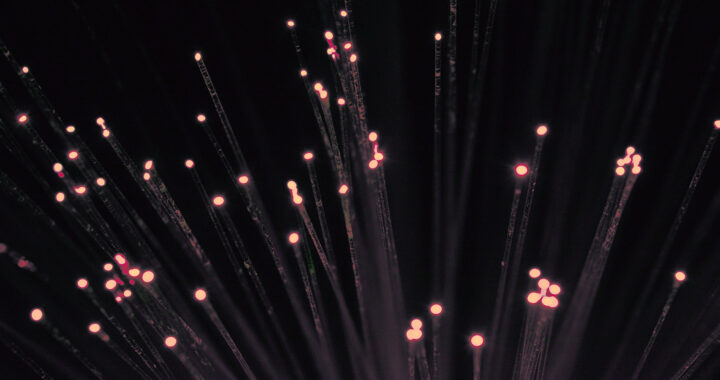A multi-disciplinary team of researchers from Portugal and the United States has turned an ordinary tin compound into a surprising new tool against cancer. Their work focuses on small engineered flakes of tin oxide that heat up under near-infrared from light-emitting diode or LED light and kill tumor cells while sparing healthy tissue.
New Approach to Photothermal Therapy: Scientists Develop Low-Cost LED-Activated Particles Based on Tin Oxide That Destroy Cancer Cells with Heat
Lighting the Path to Precision Treatment
Photothermal methods offer a targeted way to kill cancer cells with heat. But their success depends on safe materials, efficient light absorption, and controlled delivery.
Photothermal therapy is an emerging and promising approach for targeting cancer cells with high precision. The method involves using materials that can absorb near-infrared light and convert it into heat strong enough to damage cancer cells and tumors. The appeal lies in selective heating without widespread harm to surrounding healthy tissue.
Near-infrared light occupies a spectral window that travels deeper into biological structures than visible light. Because it encounters less interference from scattering and absorption, it reaches cellular targets that would otherwise be inaccessible. However, most existing therapeutic materials need powerful lasers or lose effectiveness over repeated exposure.
Researchers led by Jean Anne C. Incorvia turned to tin-based compounds as a possible solution. Tin is abundant, and its oxides have shown stability and biological compatibility in earlier studies. The challenge rests in reworking traditional tin sulfide into a nanomaterial that responds efficiently to near-infrared light while remaining safe and practical.
Reworking Tin for the Near Infrared
A simple water-based process turned a common tin compound into ultrathin flakes that generate intense cancer-killing heat when illuminated using LED light.
The team began with tin disulfide. This is a low-cost compound produced through chemical synthesis. The main issue with this material is that it has not shown strong responses to near-infrared light in its usual form. The researchers processed it in water and used ultrasonic energy to break it into extremely thin two-dimensional flakes of uniform size.
Moreover, once the flakes were prepared, the scientists applied an electrochemical oxidation process that operated entirely in aqueous media. This procedure converted the original sulfide structure into a mixed tin oxide material with interconnected nanocrystals that remained within the same flake-like geometry for consistent performance.
The resulting tin oxide nanoflakes displayed a dramatically different interaction with near-infrared radiation. Specifically, although the measured bandgap remained close to that of the starting material, exciton confinement within the crystals encouraged nonradiative energy release instead of light emission or inefficient scattering during irradiation events.
Nevertheless, when exposed to 810-nanometer light from a light-emitting diode, the tin-based nanoflakes generated substantial heat even at relatively low concentrations. Note that a particular dispersion containing 0.25 milligrams per milliliter achieved a photothermal conversion efficiency measured at 93 percent under controlled conditions.
The research team then examined how the material performed against particular cancer cell lines in culture to demonstrate a proof of concept. Laboratory results showed that under near infrared exposure lasting 30 minutes, the colorectal line SW837 showed a reduction in viability of around 50 percent, while the skin carcinoma line A431 approached 92 percent death.
Green Chemistry Meets Targeted Therapy
Environmentally responsible fabrication and low-cost light sources can reduce barriers and improve the practicality of heat-based cancer treatment approaches.
Remember that the nanoflakes were produced entirely in water without hazardous solvents. This makes the synthesis more scalable and environmentally responsible. Their electrochemical method offered a simple way to convert tin disulfide into mixed tin oxides. This avoids expensive reagents and complex processing steps common in other approaches.
A second advantage involved the use of an 810-nanometer LED instead of a high-powered and expensive laser. Traditional photothermal treatments often rely on expensive laser platforms that introduce safety concerns. The nanoflakes responded efficiently to the diode light source. This potentially lowers the cost and complexity of clinical adoption.
There was also high photothermal conversion efficiency and minimal biological toxicity outside light exposure. The nanoflakes repeatedly heated under irradiation to target and kill cancer cells without structural decline. However, the researchers note that deeper tumors, long-term safety, and in vivo behavior will require further investigations before any clinical use.
FURTHER READING AND REFERENCE
- Chang, H.-P., Silva, F. A. L. S., Nance, E., Fernandes, J. R., Santos, S. G., Magalhães, F. D., Pinto, A. M., and Incorvia, J. A. C. 2025. “SnOx Nanoflakes as Enhanced Near-Infrared Photothermal Therapy Agents Synthesized from Electrochemically Oxidized SnS2 Powders.” ACS Nano. 19(38): 33749-33763. DOI: 1021/acsnano.5c03135
